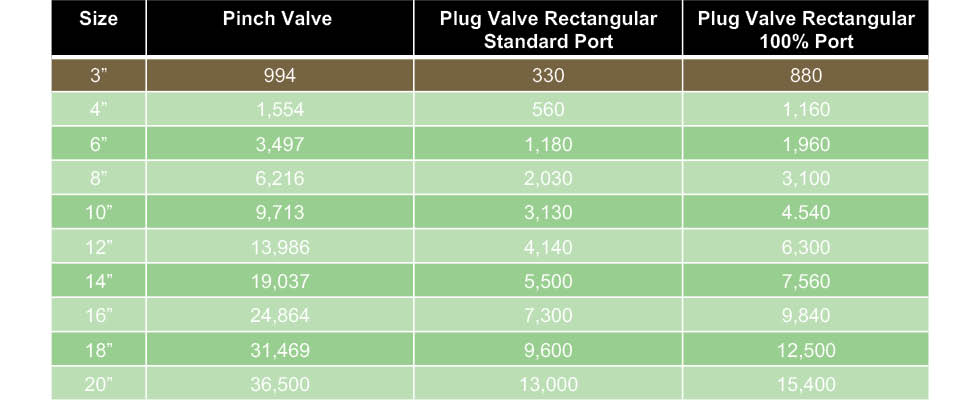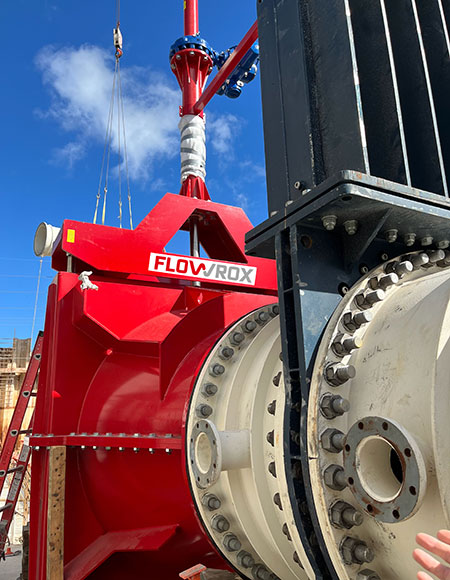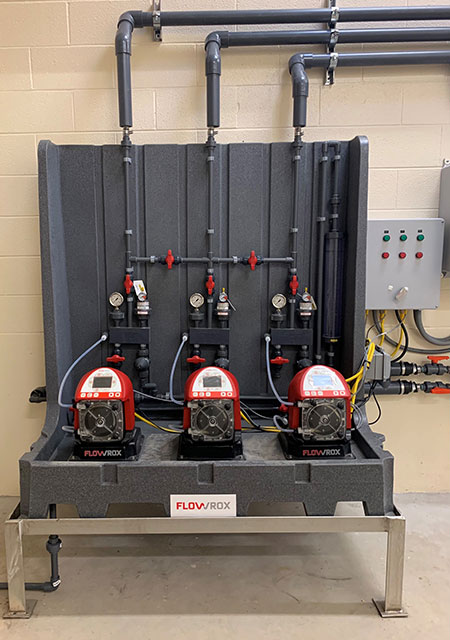
Some of the reasons pinch valves are growing in popularity in water and wastewater are due to their robust design, limited maintenance requirements, reliability, accurate flow control and ease of maintenance.
For control purposes, a pinch valve has a linear flow control curve within its optimal control range. The rubber sleeve can be manufactured to the optimal internal size to provide accurate and repeatable flow control. In North America, most pinch valves for control include an electric actuator with a 4 to 20 milliampere signal to control the flow. Also, when fully closed, a pinch valve provides 100% tight shut-off that is better than the American National Standards Institute (ANSI) class VI shut-off.

Plug valves, sluice gates and knife gates are utilized widely in water and wastewater. However, these valves have disadvantages to pinch valves. Knife gates, for instance, may have tight shut-off when new, but over time, they may only provide ANSI class IV shut-off. Both knife gates and plug valves need to be exercised, or opened and closed periodically, to keep them from seizing. A high-quality pinch valve with an enclosed and sealed screw mechanism does not require this periodic opening and closing to remain functional. The pinch valve will remain easy to operate whether it has a hand wheel, mechanical gear or electric actuator every time. The enclosed screw mechanism and dual pinch from top and bottom is vital to the ease of operation and longevity of the rubber sleeve. Not all pinch valves have these two features.
Extreme Valve Flow Coefficient (Cv)
In addition to the above advantages, the pinch valve has the highest Cv when full port. There is virtually no head loss in a pinch valve compared to plug valves and knife gate valves. In Image 1, it can be seen that even a 10-inch full port plug valve has a maximum Cv of 4,540. A full port dual pinching pinch valve has a full open Cv of 9,713, which is more than double that of a full port plug valve. The pinch valve in the open position has more than double the Cv compared to the plug valve and does not waste pumping energy or gravity flow losses.
Self-Cleaning for Extreme Services
Pinch valves also have various rubber materials that can handle both abrasive and corrosive mediums. For instance,
some pinch valves have been in service on sodium hypochlorite for more than 20 years without any maintenance or downtime. Pinch valves are capable of shutting off 100% tight on grit chambers, primary sludge, secondary sludge, lime slurry or milk of lime, clarifier isolation, ferric chloride and many other chemicals and slurries.

Lime slurry pinch valves are the most attractive valve of choice. Lime does not dissolve in solution but is rather a suspended solid. Valves that have any pockets or cavities will slowly become filled with lime particles. Those particles will accumulate and harden over time, making the valve inoperable or hard to operate.
The seats of the valves will often become damaged to the scaling that occurs on the inner surfaces. A pinch valve is self-cleaning if the valve is a dual pinch design. Lime slurry scale may build on the inner rubber sleeve, but when the valve starts to close, the rubber is flexed. This flexing starts to flake the scale build up. As the rubber sleeve closes further, the velocity through the valve increases and this increased velocity helps to flush the flaked lime particles downstream. The pinch valve is one of the only self-cleaning valves in the industry.
Peristaltic Pumps: Similar to Pinch Valves
Peristaltic pumps are the fastest growing positive displacement style of pump. Like the pinch valve, a peristaltic pump typically has one wear component. The rubber hose in the pump is replaced easily and is typically the only component that requires replacement at maintenance.
Peristaltic pumps are ideal for suction lift applications. High solids up to 80% are fully reversible and produce accurate flow control in applications, such as clarifier discharge. Small metering peristaltic pumps are heavily utilized for sodium hypochlorite, lime, ferric chloride, alum and other chemicals and slurries. Metering peristaltic pumps utilize engineered plastic tubing instead of rubber hoses. Metering peristaltic pumps are capable of 5000:1 turndown, have National Electrical Manufacturers Association (NEMA) 4X enclosures, take a 4 to 20 mA pulse or 0 to 10 volts direct current (VDC) signal for control. These types of pumps will never vapor lock like diaphragm pumps and will never cavitate either.

A common trend in water and wastewater are packaged pump systems or skids. The idea behind these systems is all complementary auxiliaries are on the skid in a protected environment. The skid can be spill containment as well. These systems are plug and play for the contractor or plant. Connect the power and piping, and the system is ready to go. A typical packaged pump system may have pulsation dampening, safety shut-off valves, pressure relief valves, gauges and a calibration column.


